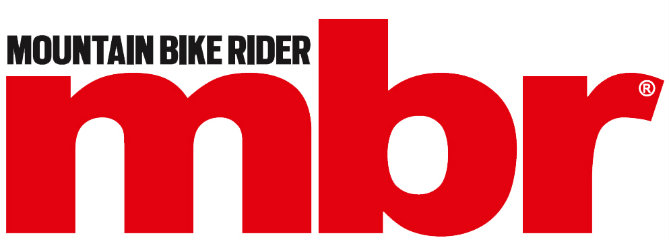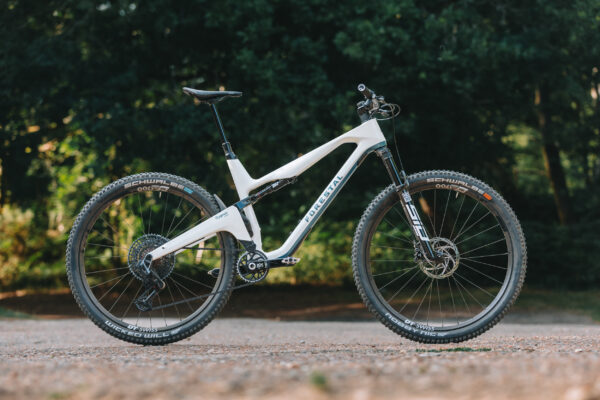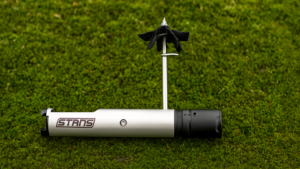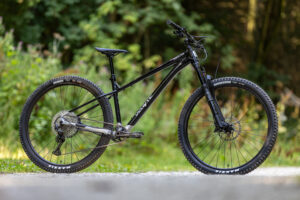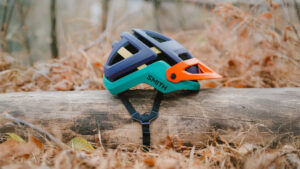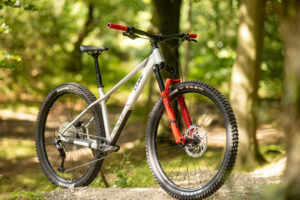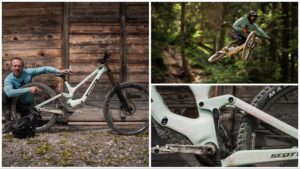Forestal's first go at a regular powered bike is the Cygnus Diode, it gets 120mm travel and a wicked frame
Why did e-bike-only brand Forestal make a regular-powered mountain bike called the Cygnus? I’ve ridden it and there are flashes of genius
While the entire mountain bike world is figuring out how to turn regular bikes into e-bikes, Forestal has done the opposite with the Cygnus and turned one of its eebs into a regular downcountry bike. It’s the equivalent of doing a stoppie 180, and riding off back the way you came.
Of course Forestal isn’t abandoning the four e-bikes that make up the rest of its range just because it’s launched the new Cygnus here, but when an e-bike only brand decides to put a foot back into the 20th century it looks a lot like attention seeking, an attempt to get back into the spotlight.
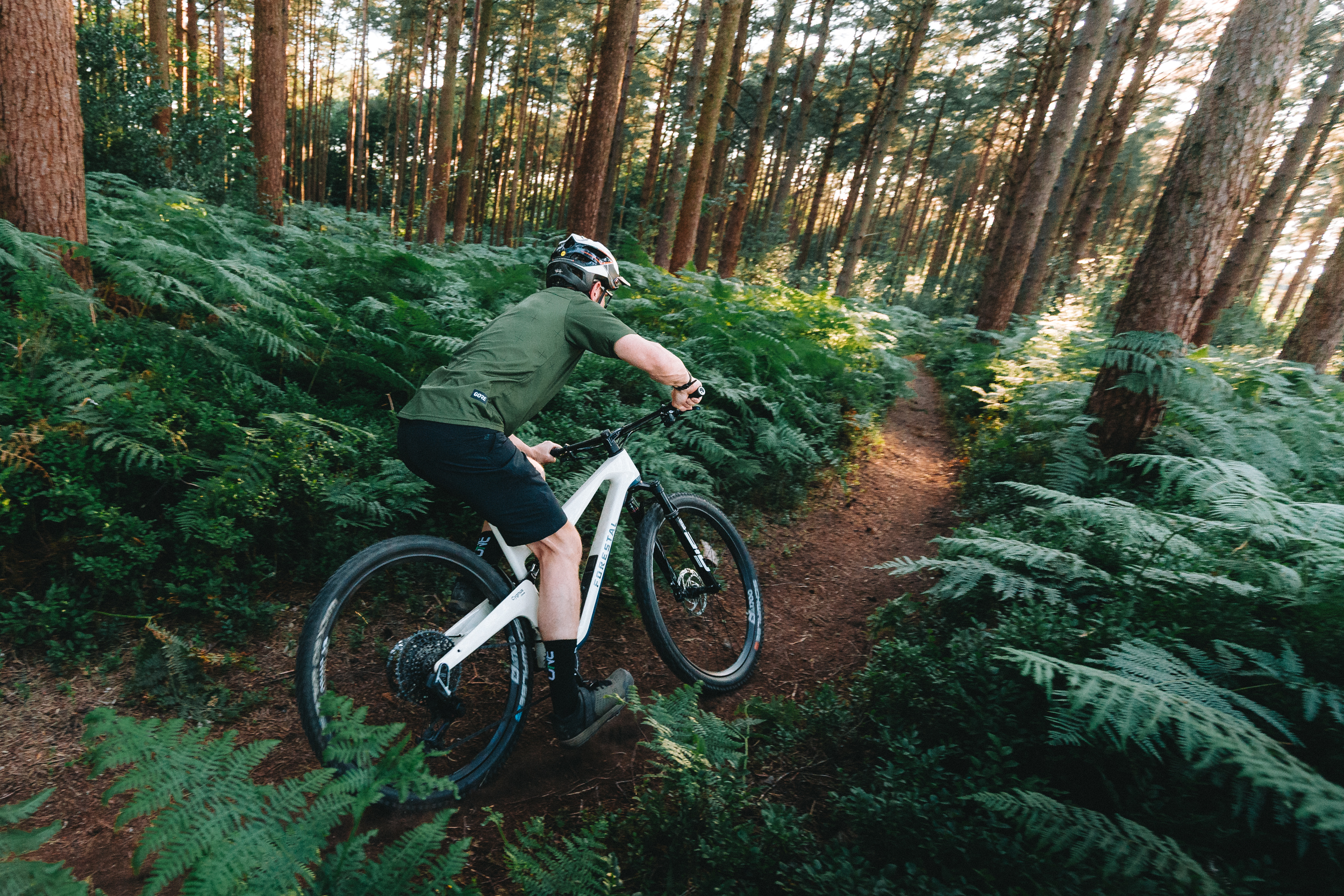
The Cygnus Diode is desperately fasy on singletrack like this
Forestal Cygnus need to know
- Down-country/ XC bike from Forestal, a brand built around e-bikes
- beautiful carbon frame with 120mm travel front and rear
- Internal frame storage with Fidlock door latch, and internal routing
- Twin-link Twin Levity suspension design, straight off the Forestal Siryon Diode 29
- One-piece bar and stem, chain device and chainstay protection
This is no marketing stunt though, according to Forestal, which actually launched another analogue bike alongside the Cygnus, a non-assisated version of the Siryon 160mm bike. XC-orientated customers wanted a bike to race on, Forestal says, a bike with the same suspension feel as the e-bike they already own. More than that though, the brand is looking to push into racing in the next few years, with a potential downhill bike on the cards too.
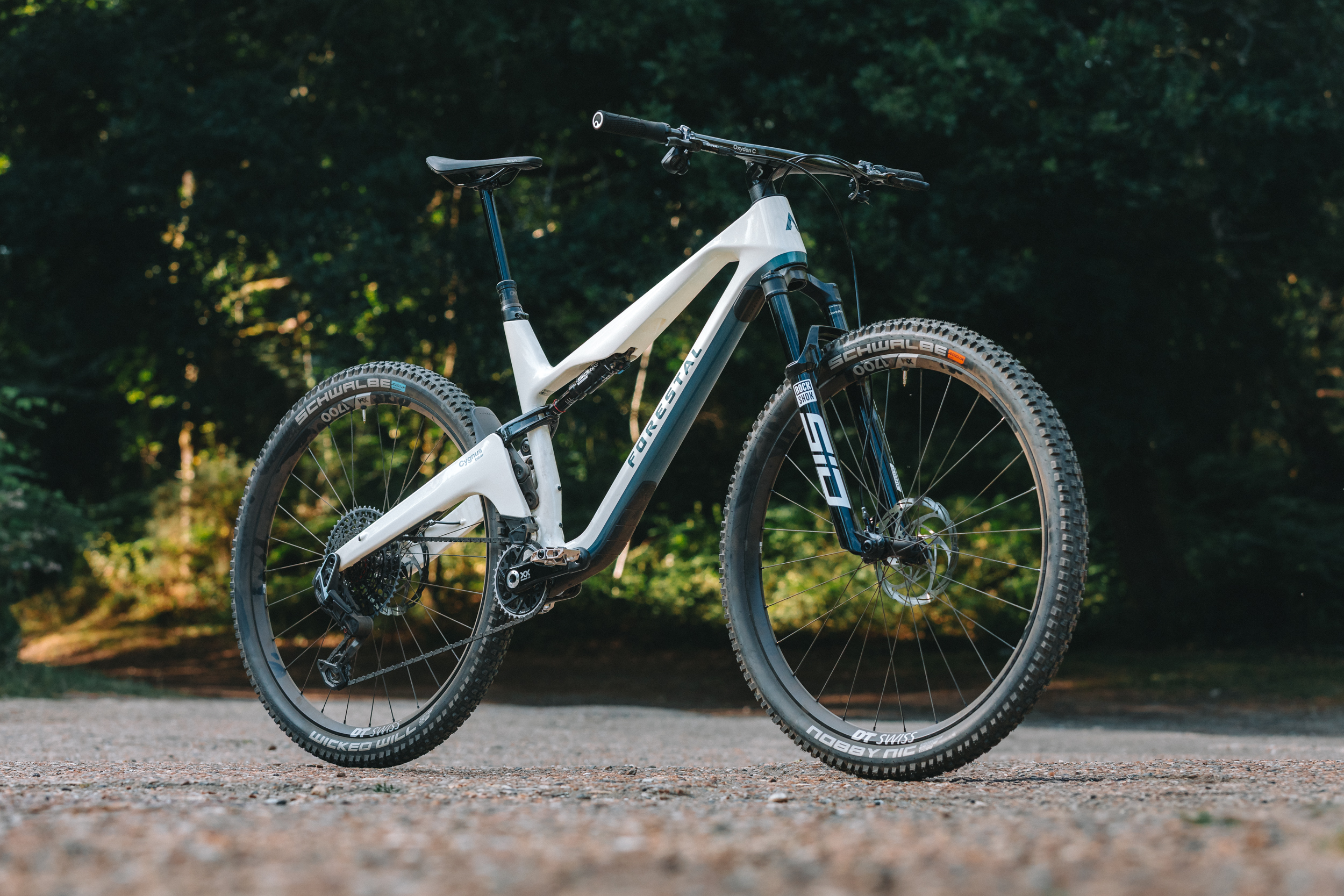
The frame is cossetting on the trails, and beautiful to the eye
I’ve got a feeling Forestal is onto something, if the data on bike sales is to be believed anyway. Expensive mountain bike sales were up last year even as the cycle industry hit a 25 year low in the UK, according to the Bicycle Association. Besides, marketing 101 is to look after the the customers you already have.
Even more surprisingly, e-bikes were 5% less popular than they were the year before. The Cygnus, at £7,789.62, might be the smartest move Forestal’s made, in light of that. And if you’re wondering why it’s such a precise figure, UK distributor Bird is running a simple conversion from euros.
Let’s get to the bike already. Forestal describes the Cygnus as both an XC race bike and a downcountry or “small trail” bike. I’ve not ridden any races on it, or stretched my way into some Lycra, so I’ve no idea if it can win races. But it did work reasonably well as a trail bike with a small t, with a sumptuous frame, uphill pace, and a couple of brilliant touches that help Forestal stand out.
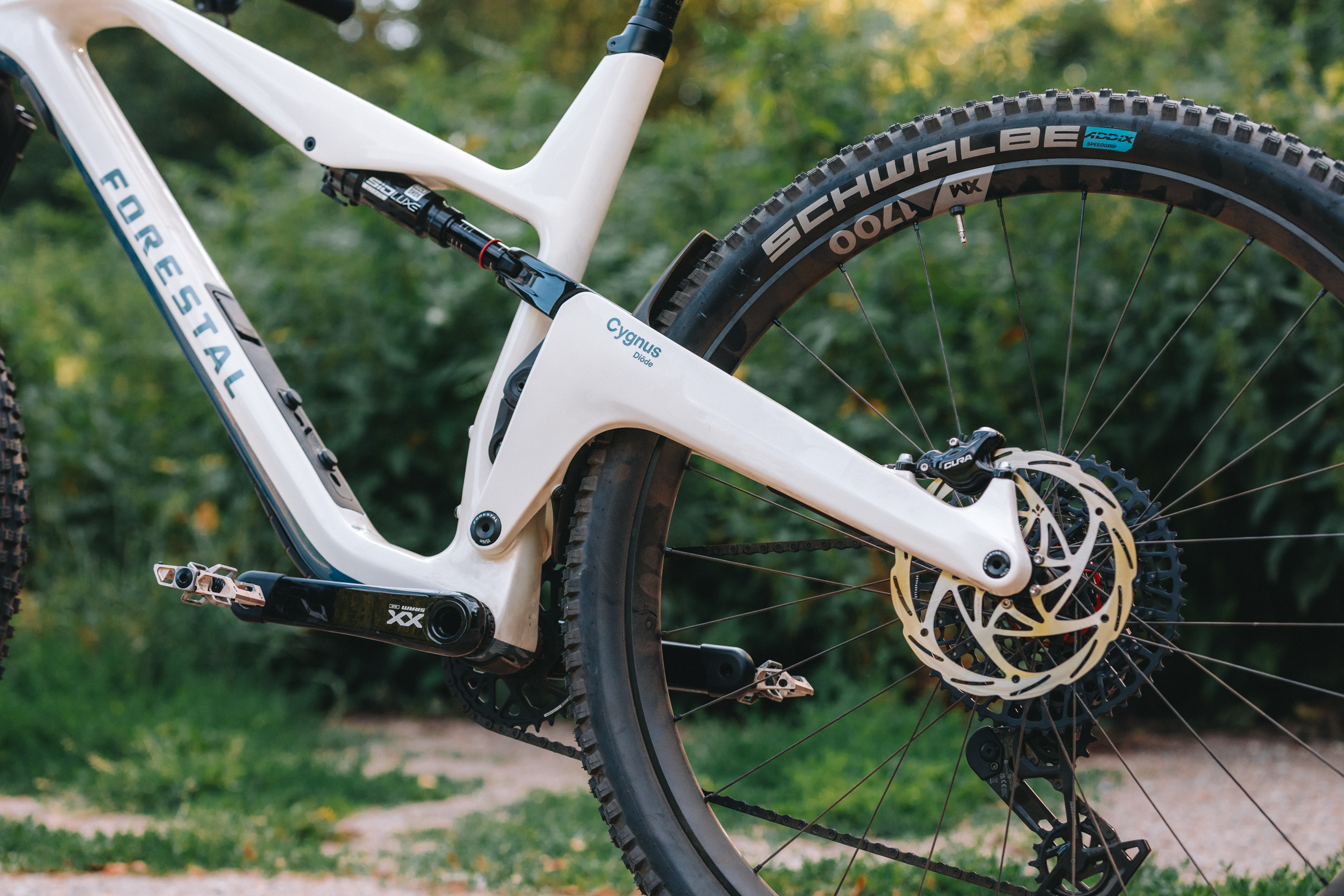
I’m not a huge fan of the one-piece back end, but it’s definitely stiff and supportive enough
Frame
Forestal uses a monocoque carbon frame for the Cygnus, laid up in Andorra it looks incredibly similar to the e-bike version of the bike with its Bosch SX motor. Of course the BB area is much slimmer and the top tube narrower, but it looks like Forestal started with the old e-bike CAD file and worked from there.
The frame is gorgeous up close, it looks modern and stylish with oversized sections around the head tube and seatpost, and a boxy but skinny down tube. I’m not sure about the boomerang at the back though, the conjoined chainstay and seatstay design reminds me of the noughties somehow, with hints of the Cannondale Prophet.

Trek’s Supercaliber hides its shock away too, but unlike the Forestal it’s actually part of the frame
Forestal has tucked the shock up tight underneath the top tube, with the frame moulded around it to give a sleek and XC look. It’s not part of the frame structure like Trek’s Supercaliber Gen 2, but it does make space for two water bottles in the front triangle.
The Cygnus has the best example of an internal storage door I’ve ever seen, designed by Fidlock it’s perfectly flush with the bike until you press a finger into the latch. A lever then pivots up, pull it and the magnetic mechanism is released, revealing the storage inside. Putting it back on again is just as quick and foolproof, chuck the door in roughly the right place and it just snaps back into place.

Downtube storage done right
Sadly I didn’t get a Fidlock bottle with the bike to see if you can still reach the latch with your water in place. But I’m told there’s no rattle or movement with a kilo of water jiggling the mechanism.
OK so the entrance isn’t the widest, but that’s only because the frame itself can’t accommodate any more, and it’s hugely long. Inside is a nylon wrap for your tools. Beware of the void though, with no floor or compartment to it I lost one of those ultralight emergency tubes down inside, but the blame lies with my own ham-fisted fettling for this one.
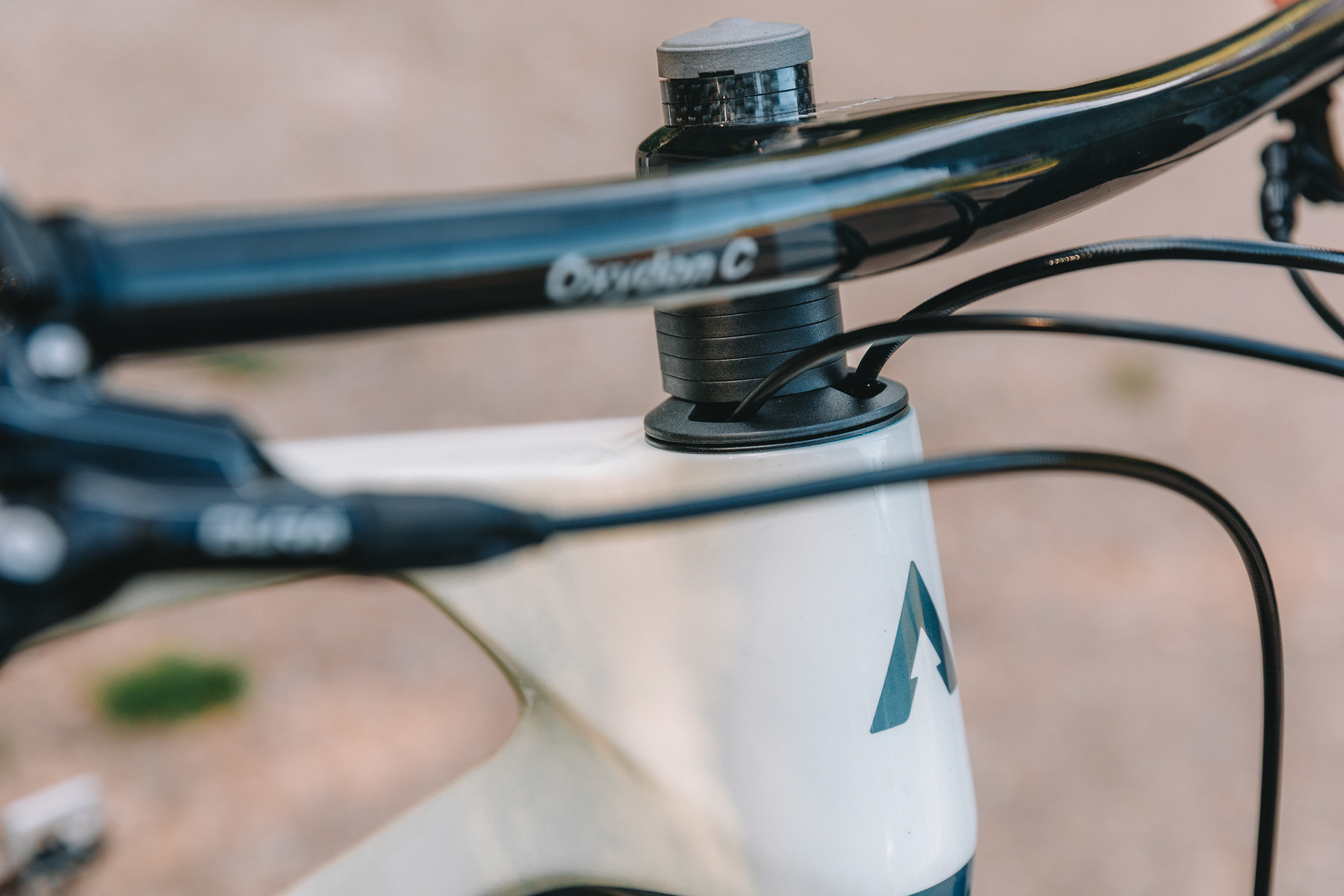
Headset cable routing keeps things neat
Worryingly though, I did notice several sections of chipped paint on the frame, one at the corner of the not-swat storage box. Forestal says the bike I had is a preproduction model and as such the paintwork wasn’t up to scratch.
The cables are routed internally and enter via the headset, it’s clean and tidy and no more trouble than traditional entry ports. The test bike I had came with wireless shifting, but there is an exit hold in the chainstay to take a wired setup. It’s something of a blemish on this AXS bike though.
There’s no chainstay protection because the boomerang takes the frame out of harm’s way, but you do get a mini mudguard at the back to stop mud spattering your pivots. And bizarrely there’s a rubbery stopper at the top of the downtube, something you usually only find on triple clamp forks to stop the fork damaging the frame when your bars over-rotate. But with a steering block installed and enough clearance for the SID to pass under the frame anyway, I’m not sure what it’s doing there.
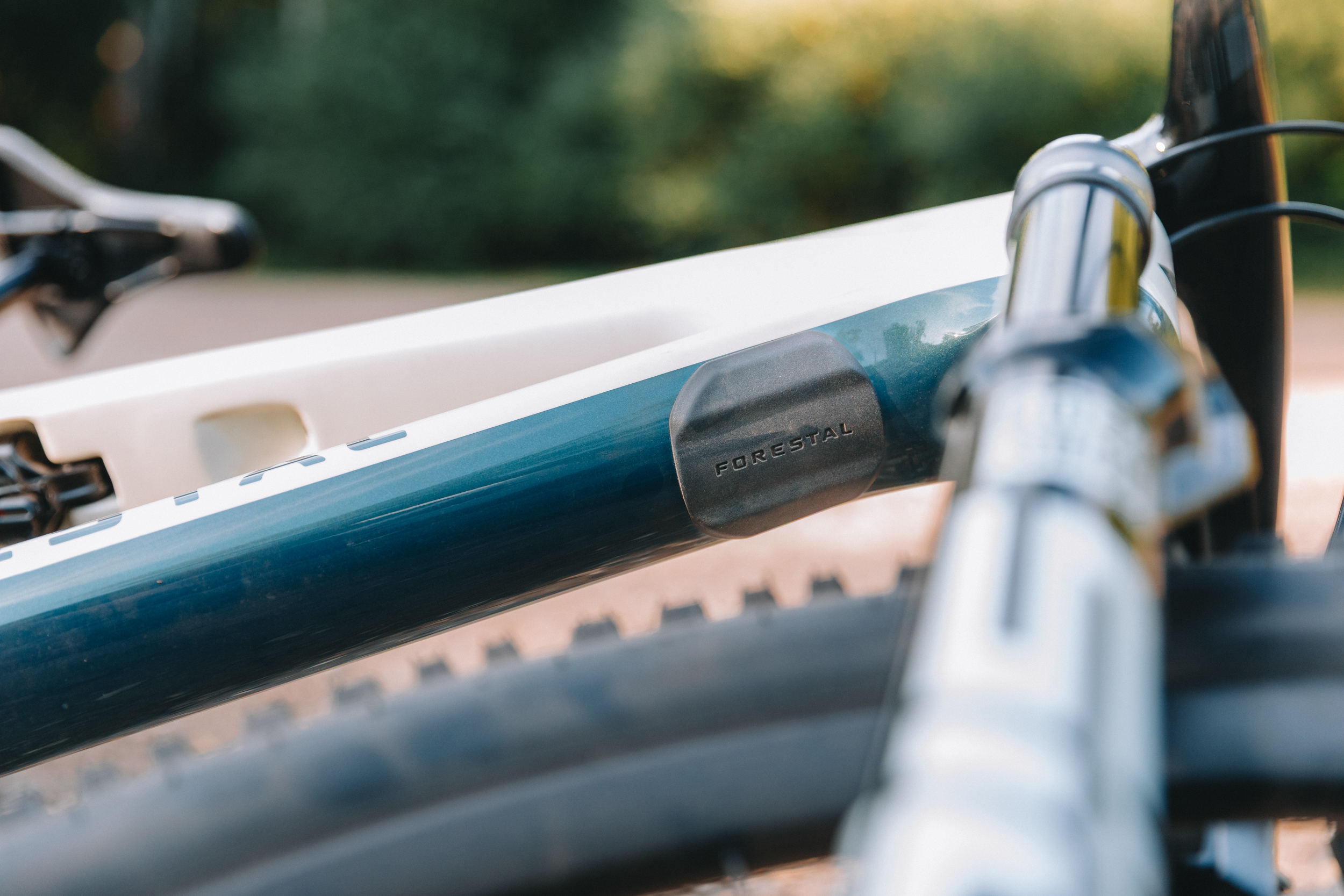
I’m not 100% sure what the bump stop is doing here, given there’s no chance of the fork actually hitting the frame
Sizing and geometry
Disappointingly there are only three frame sizes to be had, with great leaps in reach measurements that are going to mean plenty of riders fall through the gaps. I rode the XL with a 502mm reach (from a claimed 495mm) that fit me fine, but it’s a long way back to the 470mm Large and seems to miss the 480mm sweet spot most riders I know look for. The Medium is a dinky 445mm, and there’s nothing that would suit a small rider.
The rest if the geo is pretty conservative when compared with modern XC bikes like the Specialized Epic 8 Evo Pro, with a steep 67degree head angle and highish 335mm bottom bracket.
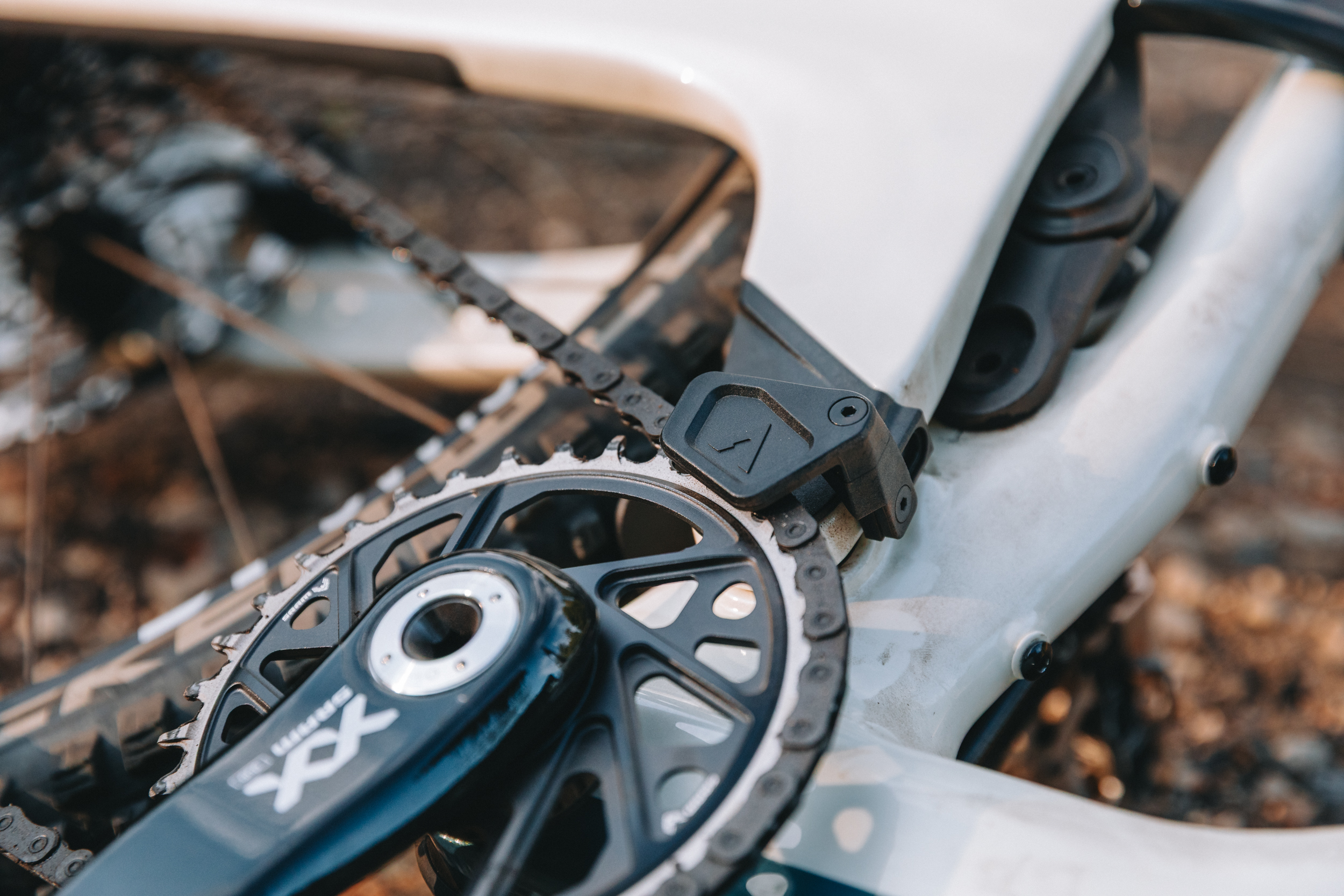
I snapped this dinky chain guide off pretty early on, and didn’t feel the need to replace it
Components
XC bikes come with chain guides too now, it seems, with the Canyon Lux Trail, Specialized Epic 8 and now the Cygnus building in some extra security. I managed to snap this one off on the first ride though, clipping it with my cleat on a pretty clumsy dismount. My fault for sure, but when its made of plimsy plastic and held on by a single bolt I can’t help thinking it was always going to happen.
I’d also argue this is unnecessary on an XC bike because I spent the rest of my time on the Cygnus without one, and didn’t drop the chain. Drivetrains like the brilliant SRAM XX here have made this sort of additional faff unnecessary on bikes that aren’t designed to plough through boulder fields too, I’d argue.
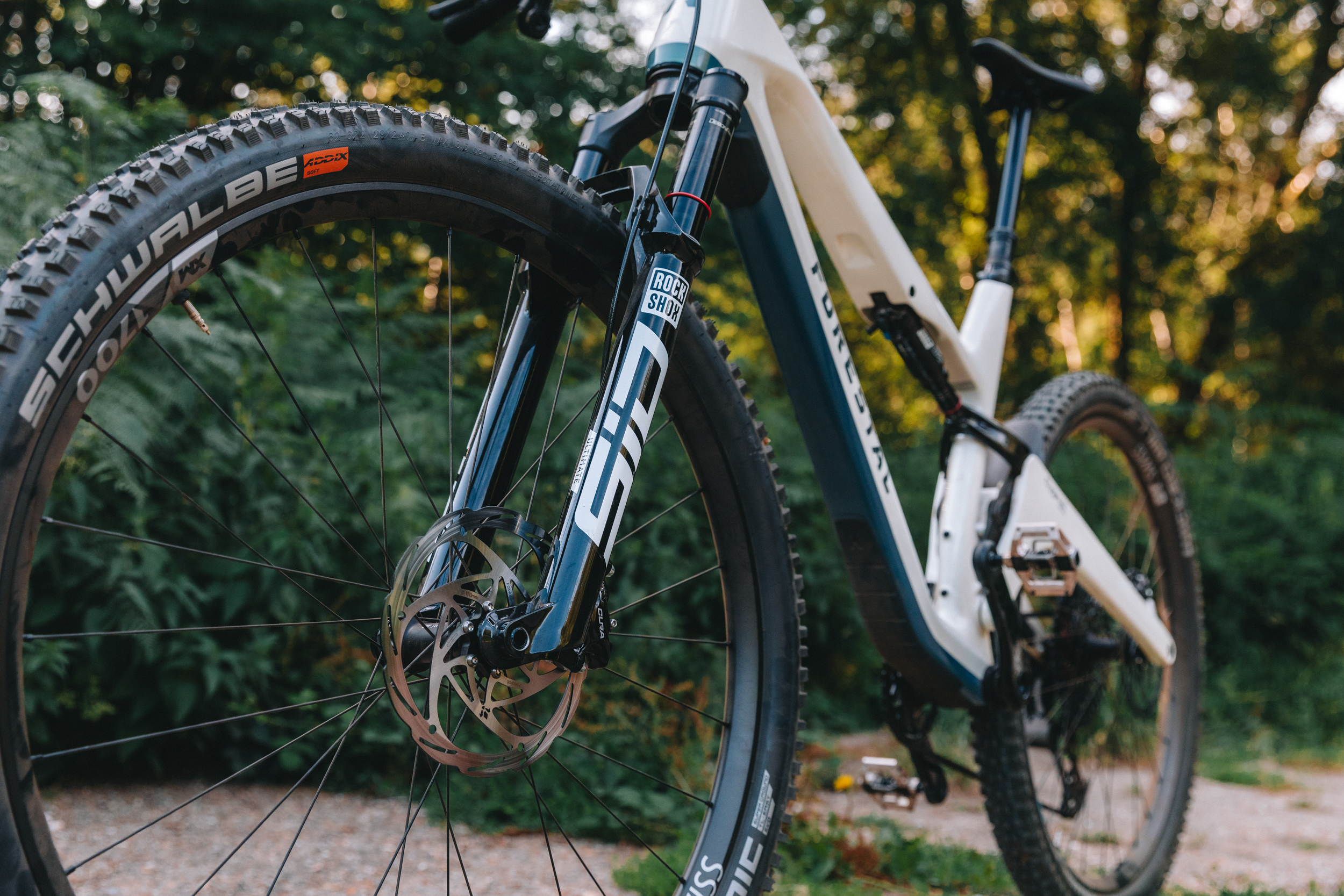
A RockShox SID Ultimate pretty much guarantees the front end will smooth out trails like a palette knife
Aside from the fabulous performance of RockShox’ SID Lux Ultimate suspension, the only other item of note is the Formula Cura brakeset. Despite being one-piston only I found them powerful without being grabby, and ideal for a bike like this.
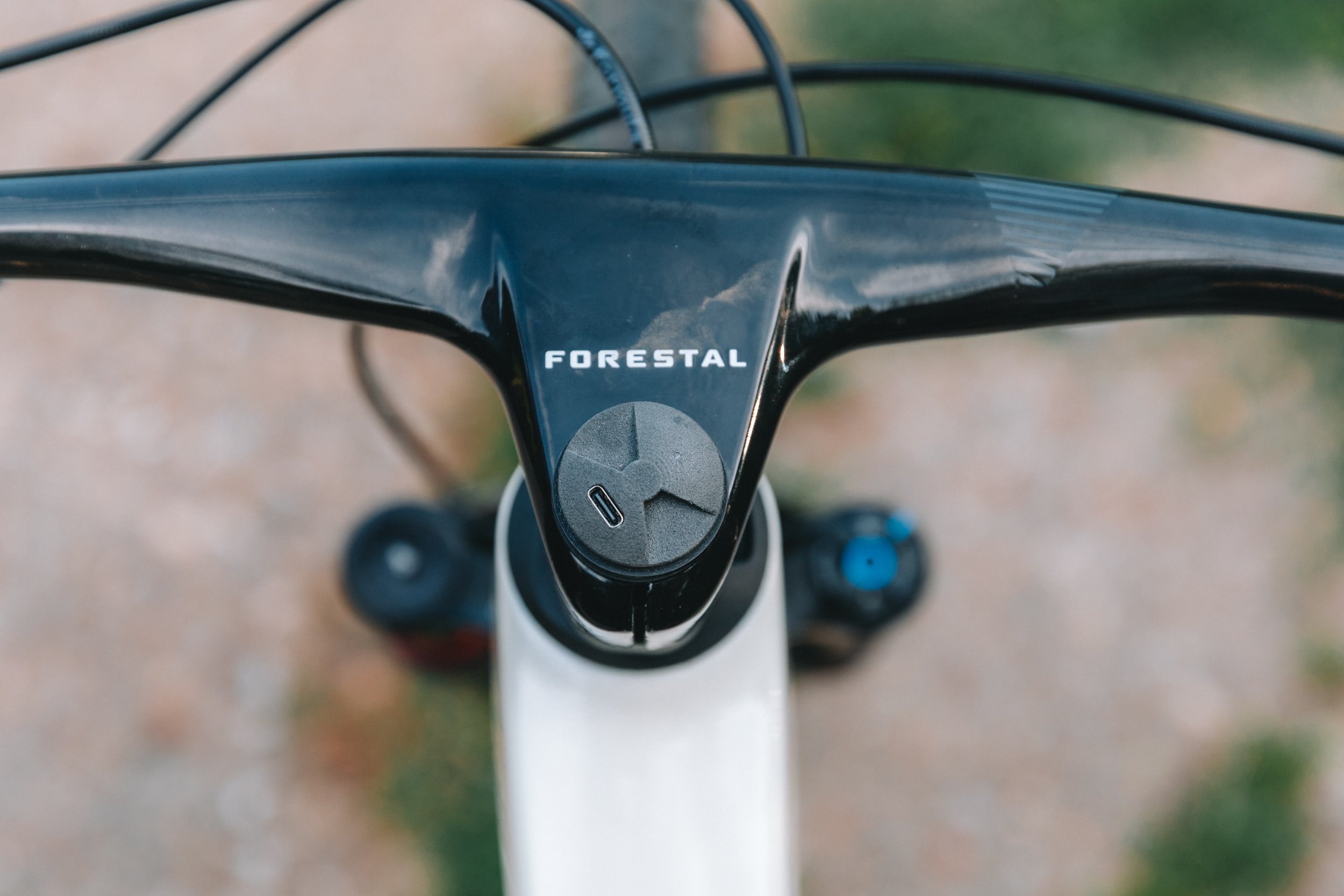
I could do without orestal’s one piece bar and stem, the shape and feel are fine but I can’t get over the 90s look of the thing
Performance
The Cygnus seems to be going after a category of mountain bike – or more accurately, a type of mountain biker – that I’ve never met. It doesn’t have the geometry of a downcountry bike, nor the exceptional light weight of an XC race machine. It’s not without its charms though, the suspension is deep and lively, the frame and styling gorgeous, and I think it could be a trail centre slayer.

The Cygnus flies up hills thanks to good ground clearance and traction
Climbing
At 12.8kg the Cygnus is not a super duper lightweight race machine. But then I already knew that before even riding the bike because it comes with internal storage, something you’d sacrifice for weight if you really wanted to climb at all costs.
That said, from a trail biker’s perspective it absolutely hauls ass on the climbs and I was able to outsprint and outlast riding friends who usually leave me for dust. I took the speed ramp approach to most techie climbs on the Cygnus, using roots or rocks to boost me off the ground and over the roughest stuff.
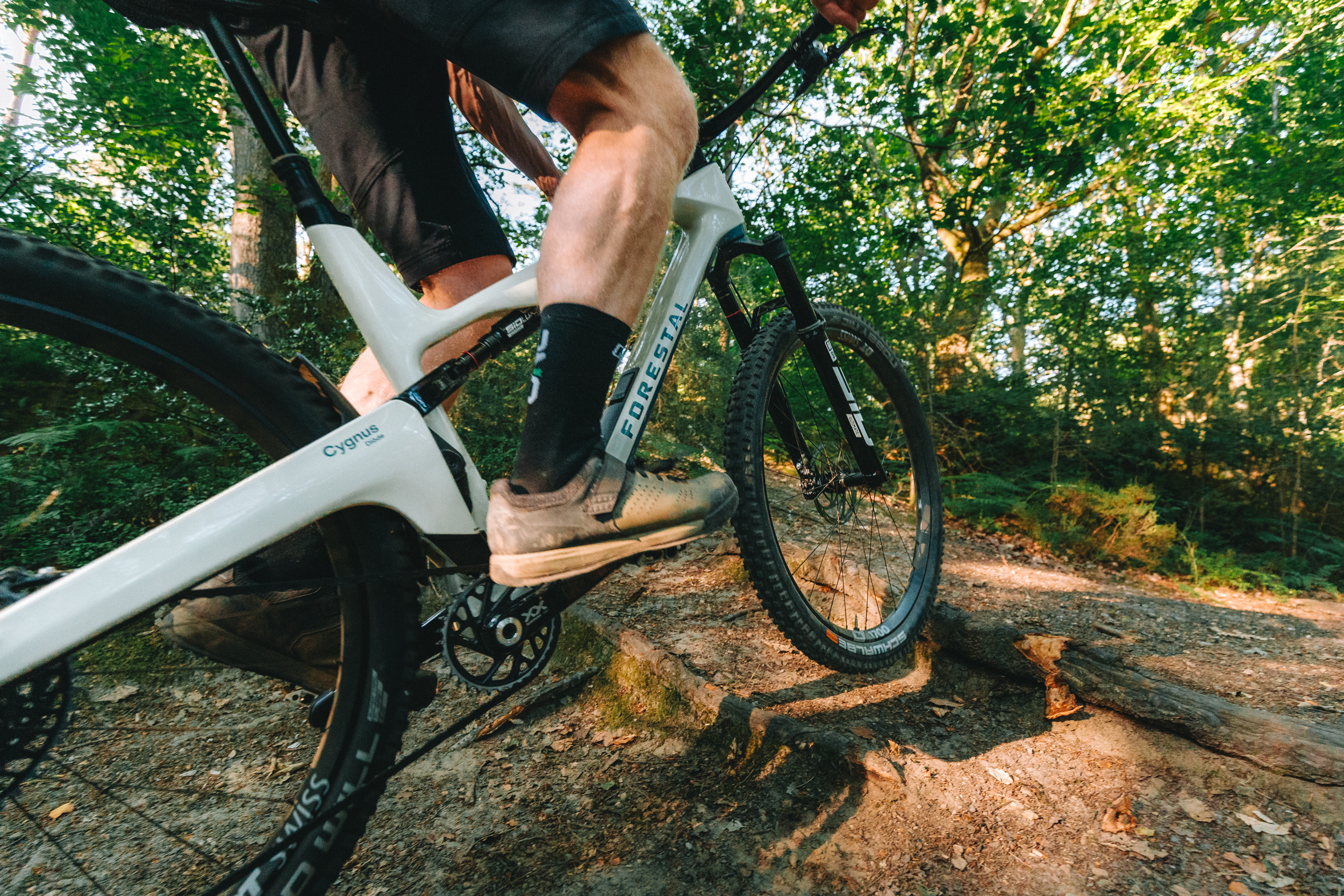
It’s easy to surge this bike forwards and force it over obstacles
The Cygnus sits up pretty high when you’re in the first few gears too, it feels efficient and willing to scrabble up anything my legs were strong enough to manage. The seat angle is perhaps a little too relaxed but the back end is supportive enough to make up for that.
Descending
Forestal’s reputation for great suspension feel preceded the bike, and I was all set to revel in its sumptuous ride after sprinting up the climbs.

You can treat this bike like trail bike, right up until it turns steep
In reality the back end felt less than hyper sensitive from the off, and when I later whipped the shock out in the workshop I found the back end ever so slightly sticky. Forestal says this extra friction is, once again, down to the preproduction nature of this bike, something that’s been sorted for production bikes I’m assured.
That said I loved the feel of Forestal’s Twin Levity suspension, it’s essentially a single pivot using a pair of links to drive the shock via a yoke. It’s probably this extra bracing that gives the Cygnus its solid ride feel – hit rougher sections or support on the trail and you could be on a trail bike rather than an XC noodle.

Faster trails are where this thing flies, it eats up blue routes or trail centres for breakfast
This feeling transfers over to smoother and faster manmade tracks, where reaching for downslopes or firing out of berms felt almost effortless. The brilliant RockShox SID up front feels perfectly matched to the back end too, using its 120mm of travel wisely and with the same kind of supportive feel.
The suspension is pretty dialled then, but the Cygnus geometry just isn’t right for me to make it an obvious pick over bikes like the brilliant Transition Spur Xo1. That steeper head angle and highish BB isn’t the end of the world, and I’ve ridden bikes I really loved with these sorts of numbers, like the Canyon Lux Trail: But when that’s combined with a short front centre the whole bike starts to feel too top heavy for me, and steeper trails have me hanging off the back too much to truly be in control.
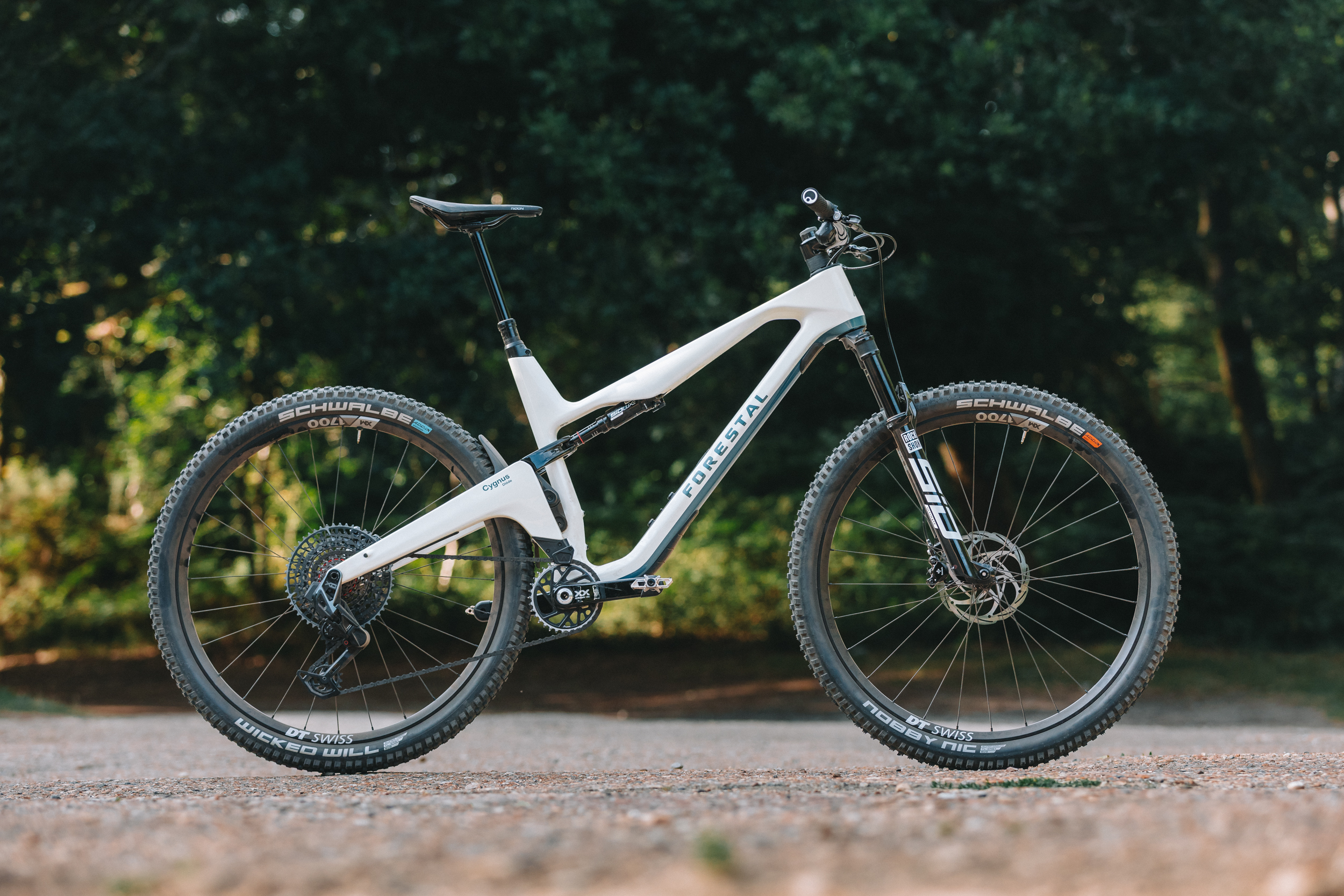
Forestal Cygnus Diode
Verdict
The Cygnus shows flashes of brilliance, with great suspension and a sumptuous frame that oozes class and individuality. For me though it falls between two posts, it’s not quite the XC race bike some will be after, while the geometry isn’t good enough to compete with first rate downcountry bikes like the Transition Spur.

